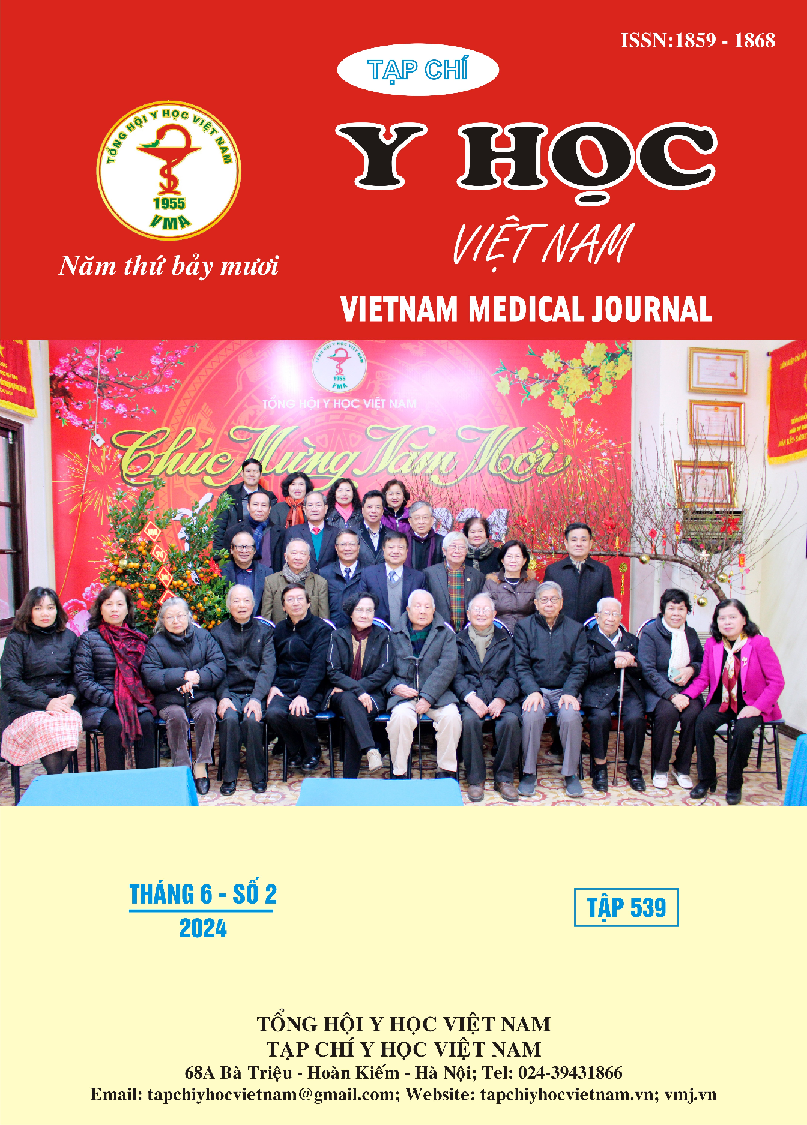WORK ENGAGEMENT OF A HEALTHCARE PROVIDER AT THE UNIVERSITY MEDICAL CENTER IN HO CHI MINH CITY
Main Article Content
Abstract
Background: Work engagement is a sustainable state of positive emotions, cognition, and motivation for the work being done, measured by three groups of factors: vigor, dedication, and absorption. Research object and method: A cross-sectional study was conducted using a self-completed survey on 1,690 healthcare providers who were working full-time at the University Medical Center, Ho Chi Minh City. The Vietnamese version of the Utrecht Work Engagement Scale (UWES) was used to collect data and aims to determine the work engagement scores of healthcare providers and related factors at the University Medical Center, Ho Chi Minh City. Results: The average UWES score of healthcare providers is 3.90 (SD = 0.91), and the factor with the lowest score was vigor (3.45 ± 1.05). Factors related to UWES (p<0.05) are gender, age, qualifications, occupation, work experience, and professional emotions. Conclusion: Healthcare providers at the University Medical Center in Ho Chi Minh City have a good level of work engagement. Factors related to work engagement are gender, age, qualifications, occupation, work experience, and professional emotions. There should be common activities to promote passion for work and connect employees with the hospital.
Article Details
Keywords
Utrecht Work Engagement Scale (UWES), Healthcare Provider
References
2. Bakertzis E, Myloni B. Profession as a major drive of work engagement and its effects on job performance among healthcare employees in Greece: A comparative analysis among doctors, nurses and administrative staff. Health Serv Manage Res. 2021;34(2):80-91
3. Kahn, W. Psychological conditions of personal engagement and disengagement at work. Academy of Management Journal, 1990, 33(4), 692-724
4. Porter M, Wang J. Personal Resources and Work Engagement: A Literature Review. J Contin Educ Nurs. 2022;53(3): 115-121. doi:10.3928/ 00220124-20220210-06
5. Sanclemente-Vinue I, Elboj-Saso C, Iñiguez-Berrozpe T. The voice of nurses as a means to promote job engagement. Rev Lat Am Enfermagem. 2019;27:e3208. Published 2019 Oct 28. doi:10.1590/1518-8345.3193.3208
6. Scaccia A. Emergency department leaders and levels of engagement among their nursing staff. Emerg Nurse. 2019; 27(2):37-41. doi:10. 7748/en.2019.e1894
7. Schaufeli, W. B., & Bakker, A. B. Job demands, job resources, and their relationship with burnout and engagement: a multi-sample study. 2004; 25(3), 293-315. doi:https://doi.org/ 10.1002/job.248
8. Trần Thị Minh Đức. Thích ứng thang đo sự gắn kết với công việc trên người lao động trẻ Việt Nam. Tạp chí Tâm lý học. 2017;8(221): 17 - 28


